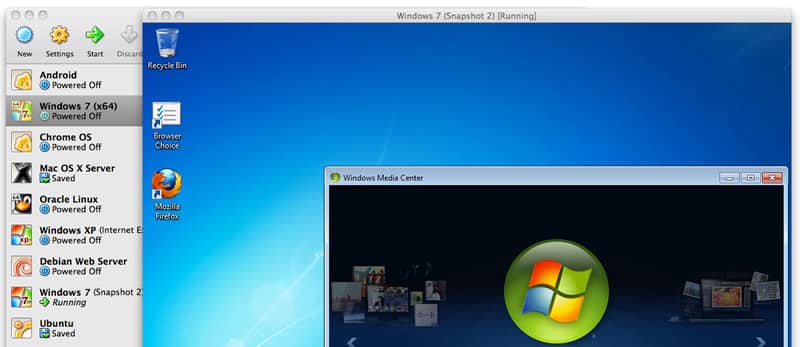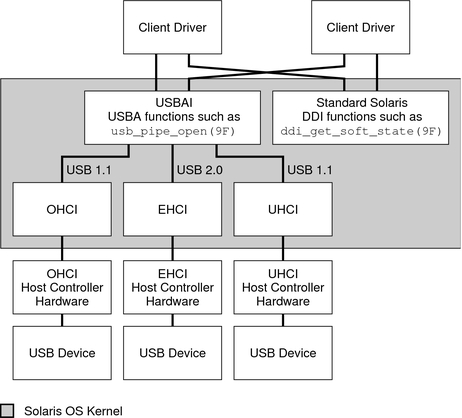- Oracle Usb Devices Driver Win 7
- Oracle Usb Devices Driver Vga
- Oracle Usb Devices Driver Updater
- Oracle Usb Devices Drivers
USB devices in drop-down list are ALL in 'busy' state. If I try to attach one (a USB 232 converter in this example) I get the following error: Failed to attach the USB device Prolific Technology Inc. USB-Serial Controller 0300 to the virtual machine WinXP Devel. The Oracle Solaris USB Architecture (USBA) adheres to the USB 1.1 and USB 2.0 specifications and is part of the Oracle Solaris Device Driver Interface (DDI). The USBA model is similar to Oracle Common SCSI Architecture (SCSA).
VirtualBox 6.0.0 r127566 (Qt5.6.2), Oracle VM VirtualBox Extension Pack 6.0.0r127566Host is Window 10 Pro 64-bit version 10.0.17134.345
Guest is Windows 7 Enterprise 64-bit version 6.1.7601
The device is a spirometer that doesn't have USB drivers for Windows 10 but works well in Windows 7. The vendor ID is not in the USB ID Repository. The vendor ID is 0ae0 and the product ID is 4000.
I've read through the USB basics and troubleshooting post and have not been successful in getting the device to be detected by VB and show up under Devices > USB..much less make it to the guest OS.
 The one thing I haven't determined is what could possibly be capturing it, if anything, in the host before VB USB Monitor grabs it.
The one thing I haven't determined is what could possibly be capturing it, if anything, in the host before VB USB Monitor grabs it. 

Before installing VB, I tried plugging the device into Win 10 and the USB driver installation was blocked (out of date signature), so I disabled Secure Boot and Driver Signature Enforcement so that the vendor's USB driver would install. I was able to get Win 10 to see it in Device Manager as a KoKo Spirometer with the vendor supplied (Win 7) driver but Windows 10 marked it with an exclamation point in Device Manager and would complain when you plugged it in that wasn't functioning properly (as to be expected due to the driver not supporting Win 10).
I installed VB, set up the guest, added a USB filter including just the ven & prod IDs, started the guest, logged in, and then plugged the device in. Windows 10 complained that it's not recognized and the guest never sees anything plugged in. I used Device Manager, USBDeview, & the manufacturer's INF file to confirm that I had the proper vendor & product IDs.
 When going through the troubleshooting post, I searched the USB ID Repository and noticed the vendor isn't listed but didn't see how that should prevent the USB filter to work. Since the vendor isn't available in the repository, it's a bit more effort to get it added to the list.
When going through the troubleshooting post, I searched the USB ID Repository and noticed the vendor isn't listed but didn't see how that should prevent the USB filter to work. Since the vendor isn't available in the repository, it's a bit more effort to get it added to the list. After failing to get VB to see the USB device, I uninstalled it from the host via Device Manager and also USBDeview. Now when I plugin the device it shows up as Other devices > Unknown device (with the proper ven & prod IDs, however). VB USB Mon still doesn't grab it before Windows 10 complains that it's not recognized.
Is there anything I can do to determine why VB is unable to capture it?
Output from commands as requested in post #8:
- Code: Select allExpand viewCollapse view
c:Program FilesOracleVirtualBox>VBoxManage -version
6.0.0r127566
c:Program FilesOracleVirtualBox>VBoxManage list extpacks
Extension Packs: 1
Pack no. 0: Oracle VM VirtualBox Extension Pack
Version: 6.0.0
Revision: 127566
Edition:
Description: USB 2.0 and USB 3.0 Host Controller, Host Webcam, VirtualBox RDP, PXE ROM, Disk Encryption, NVMe.
VRDE Module: VBoxVRDP
Usable: true
Why unusable:
c:Program FilesOracleVirtualBox>VBoxManage list usbhost
Host USB Devices:
UUID: b620422b-9e41-40b7-acd4-7c6ef2ce235c
VendorId: 0x0cf3 (0CF3)
ProductId: 0xe007 (E007)
Revision: 0.1 (0001)
Port: 6
USB version/speed: 2/Full
Manufacturer: Qualcomm Atheros Communications
Address: {e0cbf06c-cd8b-4647-bb8a-263b43f0f974}0000
Current State: Busy
UUID: c071498e-b516-477b-8b8e-d731d945488b
VendorId: 0x0bda (0BDA)
ProductId: 0x58c7 (58C7)
Revision: 105.33 (10533)
Port: 11
USB version/speed: 2/High
Manufacturer: Realtek Semiconductor Corp.
Address: {36fc9e60-c465-11cf-8056-444553540000}0002
Current State: Busy
c:Program FilesOracleVirtualBox>VBoxManage list usbfilters
Global USB Device Filters:
<none>
c:Program FilesOracleVirtualBox>VBoxManage showvminfo 'Windows 7'
Name: Windows 7
Groups: /
Guest OS: Windows 7 (64-bit)
UUID: d8c4e4bf-04fe-4cc4-950e-7c61ac33cd33
Config file: C:UsersclinicmbpVirtualBox VMsWindows 7Windows 7.vbox
Snapshot folder: C:UsersclinicmbpVirtualBox VMsWindows 7Snapshots
Log folder: C:UsersclinicmbpVirtualBox VMsWindows 7Logs
Hardware UUID: d8c4e4bf-04fe-4cc4-950e-7c61ac33cd33
Memory size 8192MB
Page Fusion: disabled
VRAM size: 64MB
CPU exec cap: 100%
HPET: disabled
CPUProfile: host
Chipset: piix3
Firmware: BIOS
Number of CPUs: 4
PAE: disabled
Long Mode: enabled
Triple Fault Reset: disabled
APIC: enabled
X2APIC: disabled
Nested VT-x/AMD-V: disabled
CPUID Portability Level: 0
CPUID overrides: None
Boot menu mode: message and menu
Boot Device 1: Floppy
Boot Device 2: DVD
Boot Device 3: HardDisk
Boot Device 4: Not Assigned
ACPI: enabled
IOAPIC: enabled
BIOS APIC mode: APIC
Time offset: 0ms
RTC: local time
Hardw. virt.ext: enabled
Nested Paging: enabled
Large Pages: enabled
VT-x VPID: enabled
VT-x unr. exec.: enabled
Paravirt. Provider: Default
Effective Paravirt. Prov.: HyperV
State: powered off (since 2018-12-20T20:07:43.000000000)
Monitor count: 1
3D Acceleration: disabled
2D Video Acceleration: disabled
Teleporter Enabled: disabled
Teleporter Port: 0
Teleporter Address:
Teleporter Password:
Tracing Enabled: disabled
Allow Tracing to Access VM: disabled
Tracing Configuration:
Autostart Enabled: disabled
Autostart Delay: 0
Default Frontend:
Storage Controller Name (0): SATA
Storage Controller Type (0): IntelAhci
Storage Controller Instance Number (0): 0
Storage Controller Max Port Count (0): 30
Storage Controller Port Count (0): 3
Storage Controller Bootable (0): on
SATA (0, 0): C:UsersclinicmbpVirtualBox VMsWindows 7Windows 7.vdi (UUID: 66f4790b-b198-4ba8-81f2-a58b826d36ee)
SATA (2, 0): Empty
NIC 1: MAC: 0800277F30A5, Attachment: NAT, Cable connected: on, Trace: off (file: none), Type: 82540EM, Reported speed: 0 Mbps, Boot priority: 0, Promisc Policy: deny, Bandwidth group: none
NIC 1 Settings: MTU: 0, Socket (send: 64, receive: 64), TCP Window (send:64, receive: 64)
NIC 2: disabled
NIC 3: disabled
NIC 4: disabled
NIC 5: disabled
NIC 6: disabled
NIC 7: disabled
NIC 8: disabled
Pointing Device: USB Tablet
Keyboard Device: PS/2 Keyboard
UART 1: disabled
UART 2: disabled
UART 3: disabled
UART 4: disabled
LPT 1: disabled
LPT 2: disabled
Audio: enabled (Driver: DSOUND, Controller: HDA, Codec: STAC9221)
Audio playback: disabled
Audio capture: enabled
Clipboard Mode: Bidirectional
Drag and drop Mode: Bidirectional
VRDE: disabled
OHCI USB: disabled
EHCI USB: disabled
xHCI USB: enabled
USB Device Filters:
Index: 0
Active: yes
Name: nSpire Health, Inc
VendorId: 0ae0
ProductId: 4000
Revision:
Manufacturer:
Product:
Remote:
Serial Number:
Bandwidth groups: <none>
Shared folders:
Name: 'Shared', Host path: 'C:UsersclinicmbpShared' (machine mapping), writable, auto-mount
Capturing: not active
Capture audio: not active
Capture screens: 0
Capture file: C:UsersclinicmbpVirtualBox VMsWindows 7Windows 7.webm
Capture dimensions: 1024x768
Capture rate: 512kbps
Capture FPS: 25kbps
Capture options:
Guest:
Configured memory balloon size: 0MB
Oracle Usb Devices Driver Win 7

Hi SwitchDHole,
I don't know what that means. Can you confirm the following:
You are running an Arch Linux host.
You are running a Windows as guest in a VirtualBox VM.
You are using Gnome on Arch and that you are launching VirtualBox from Gnome, but that is irrelevant to the issue.
The virtual machine does not have direct access to the drives on the host. The 'Virtual Machine' only has the drives that are on the virtual controllers on its virtual bus. This is to be expected.
You have two options. One, you can use shared folders. With shared folders, you identify a directory in file system that is available to the host and you share that with the guest. In windows, that shared folder will show up as a network drive. It works swimmingly.
Oracle Usb Devices Driver Vga
The other option is to use the Virtual machine control to logically attach that USB device to the virtual machine. The USB device will act to the host operating system as if the USB device was unplugged (the USB file system will not be available under Nautilus), and the USB will appear to the guest to be 'plugged' into it. In this way, the physical device is available to the virtual guest. Windows then owns the device and uses Windows drivers to control it. This works for all classes of USB devices. With thumb drives, the file systems appear in Windows Finder as a local drive.
Oracle Usb Devices Driver Updater
Edit: Something went seriously wrong with my first post. Cleaned up to make it make sense.
Oracle Usb Devices Drivers
Last edited by ewaller (2015-03-14 18:00:29) NXP Multifunction Devices Driver Download for windows.

